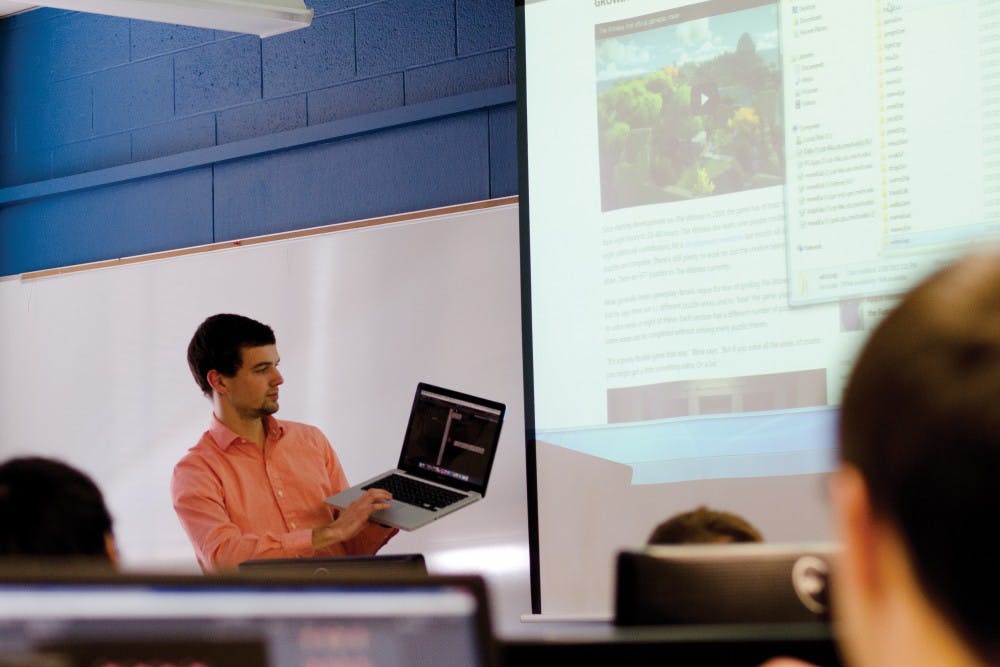Students develop video games for disabled gamers

Vibrations and sounds take the place of three-dimensional graphics and colors for the visually impaired. A virtual reality simulator helps those with cognitive disabilities learn to cross the street.
Playing video games is a pastime for many Central Michigan University students, but for those with disabilities, it can prove to be a challenging exercise.
Howell junior Ethan Coggins, an information technology major, is a member of the CMU Game Development and Design Club. The group is in its first year as a registered student organization.
The club is made up of undergraduate students who are working with assistant computer science professor Tony Morelli on a virtual reality project. Using simulations, the game is intended to help high school students with intellectual disabilities learn to navigate a city environment, along with the functions of street crossings and traffic signals.
The project is starting this semester.
"Any way to bring gaming to more people I am 100 percent for," Coggins said.
In his second year at CMU, Morelli and several students have begun to adapt popular video games so those with disabilities can get in on the action.
"In general, what I've done in the past is start games from scratch and create them specifically for people who are blind," Morelli said. "Everything is enhanced sounds, and vibrations which allow the player to interact with the game."
Prior to coming to CMU, he worked for 14 years in slot machine testing and development in new markets.
Morelli's research focuses on creating games for people with disabilities.
He said to make games fun, enjoyable and playable for everyone, they must be able to highlight players' abilities and focus on what people are actually able to do.
Over the summer, Morelli started programming a game for the Nintendo Wii on a Macintosh computer with a balance board for blind players, which features a combination of graphics, vibrations and sounds.
Even though a game might have really good vibrations and sounds, Morelli said it should also have decent graphics in order to attract sighted players so everyone can have an equally enjoyable experience.
Morelli teaches a computer design course, ITC 383, and said throughout the semester he discusses accessible gaming. He stressed the importance of integrating accessibility features into a game from the beginning, rather than trying to add them into an already-finished product.
Midland sophomore Molly Rossman is another student working with Morelli. The president of CMU's Game Development and Design club, Rossman said being a visually-oriented person has helped her bring a new perspective to game design and to the project.
"The way I interpreted it is there's a group here on campus that wants to see how video games and media can affect the learning of kids with disabilities," she said. "Kids who would regularly not be able to learn a principle on paper can experience it through a virtual reality and see if that helps them more."



